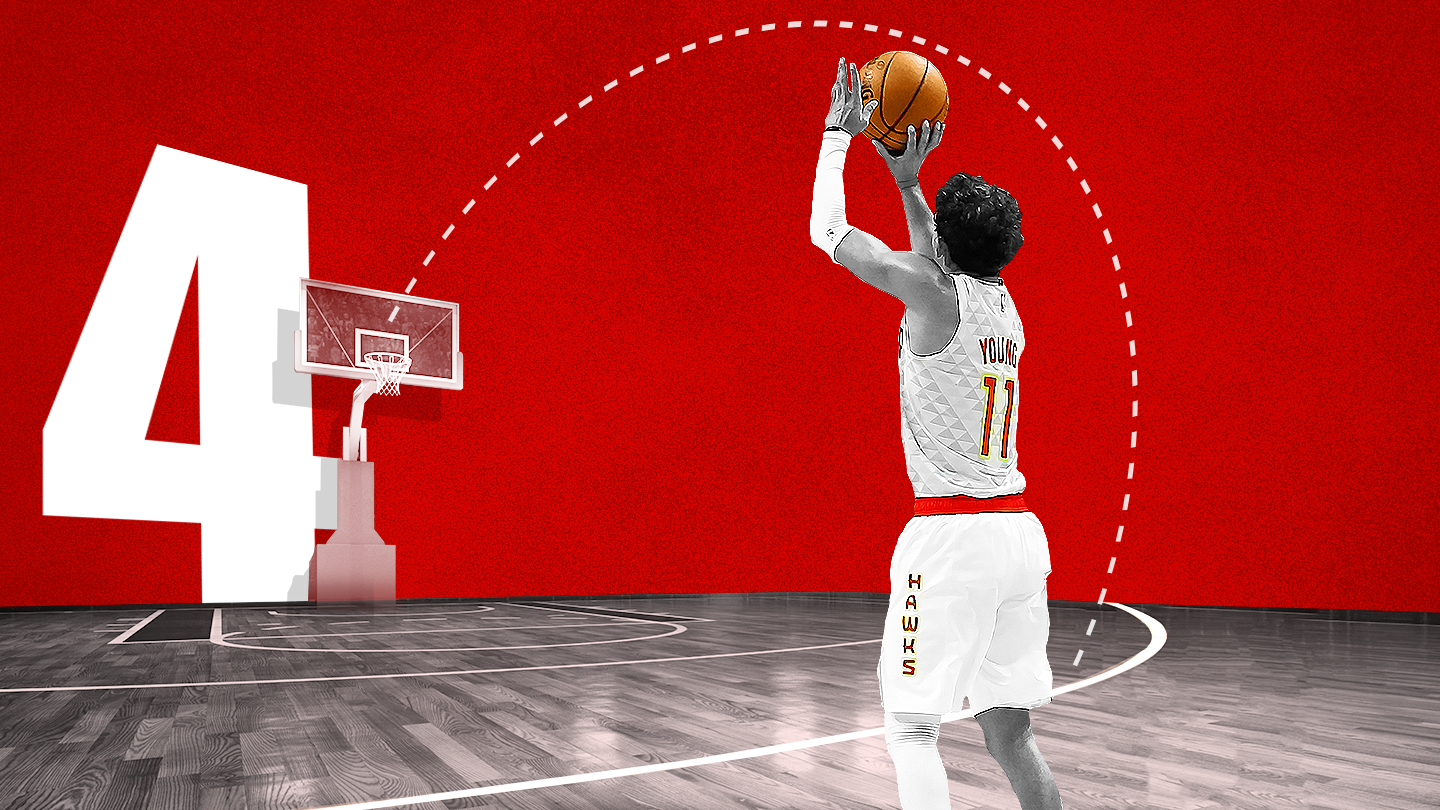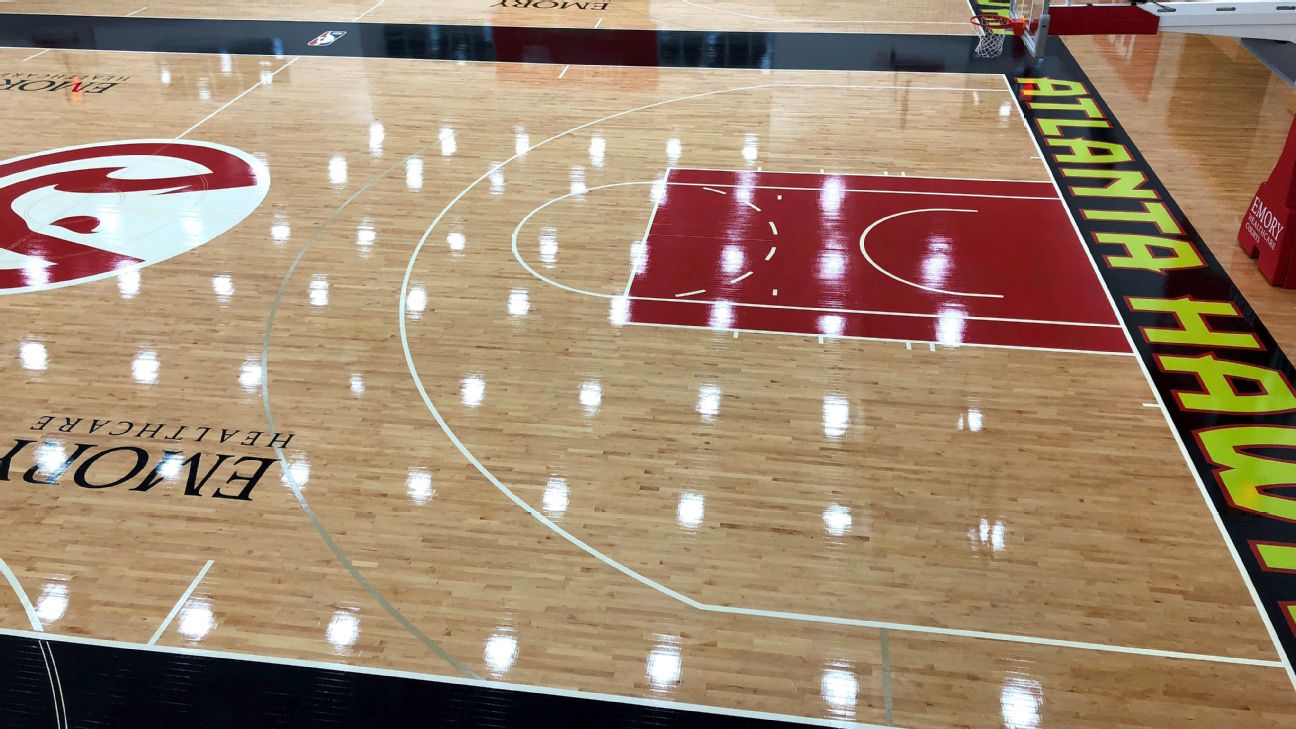Hawks leading the '4-point' revolution
Posted: Tue Dec 18, 2018 3:10 pm
ESPNHow the '4-point line' and other court markings are changing the NBA
WHEN TRAE YOUNG buried a deep 3-pointer against the Los Angeles Lakers in mid-November, he didn't hold his follow-through or flash three fingers. No, the Atlanta Hawks rookie guard celebrated by pointing to the court, encouraging Lonzo Ball and the Staples Center crowd to gawk at his shooting range.
As he turned to retreat on defense, Young swept his fingers near the tail of the purple "L" of the Lakers' midcourt logo, more than 30 feet from the hoop. In Los Angeles, he was merely pointing to an anonymous spot on the floor. But if he had been in Atlanta's practice facility, he would've been pointing at something more tangible: the Hawks' "4-point line."
Over the past few years, the NBA has experienced an offensive explosion. And as coaches have sought to keep up with high-efficiency offenses that continue to get smarter and faster thanks to the boom in analytics, they have begun reimagining the court itself.
Save for the addition of the 3-point line, the official dimensions and lines of an NBA court have hardly changed since 1951. But Brown, like other coaches, has added extra markings, carved out special zones and divvied up the playing surface of the Sixers' practice court -- in some cases down to the inch -- in hopes of teaching his players the best practices for spacing the floor and scoring.
In essence, coaches have created a visual language to communicate with their twenty-something players (the average age in the NBA is 26.5), many of whom grew up listening to audiobooks and looking at e-readers instead of thumbing through paperback novels. "We're constantly trying to educate players quicker and more directly," Hawks coach Lloyd Pierce says.
And with the NBA's ongoing emphasis to make players think efficiency and spacing, Brown installed one extra line on the Sixers' practice court in February 2017: a phantom gray 4-point line.
Since then, others have followed suit.
To explain how the Hawks' 4-point line -- which is painted onto the floor 5 feet beyond the regular 3-point line -- helps his team, Pierce walks onto the court to physically demonstrate. The condensed version of Pierce's 36-minute explanation, which is punctuated by wild gesticulation, is this: "Spacing changes the whole game."
Atlanta targeted Young out of Oklahoma in the 2018 draft lottery, with hopes of building an offense around his long-range shooting and passing skills. Because Young is willing and able to shoot off the dribble from well beyond the 3-point arc, defenders are forced to step out to defend him almost as soon as he crosses half court. Although he already had that range before he joined the Hawks, Young acknowledges that not everybody has the natural instinct to pull up from that deep, so it helps to have a visual reminder.
Lloyd not only wants Young to shoot from the 4-point line but to make plays from there, too. Expanding the floor outward, in turn, creates space in the paint for big men such as second-year breakout John Collins. If a guard like Young can initiate a play from behind the 4-point line, defenses are forced to cover more ground and, eventually, make difficult choices and compromises.
"When Trae gets here, he has decisions to make," Pierce says from the 4-point line, before jogging to the basket to mimic a Young drive. "If someone is going to meet him at the rim, he is going to know to make those passes out." Pierce says one reason the Hawks valued Young so highly in the draft was his ability to make kickout passes to shooters with either hand on the run.
Although the rebuilding Hawks are off to a 6-23 start, Young's arrival has helped Pierce realize his vision of a perimeter-oriented offense. Atlanta is launching 35.4 3-pointers per game this season, fourth most in the league. That's up from last season, when the Hawks took 31 triples per game and ranked seventh. Atlanta's willingness to shoot from deep has in turn opened room for a nice pick-and-roll pairing between Young and Collins, who is averaging 18.5 points per game and ranks in the top 20 leaguewide in dunks.

